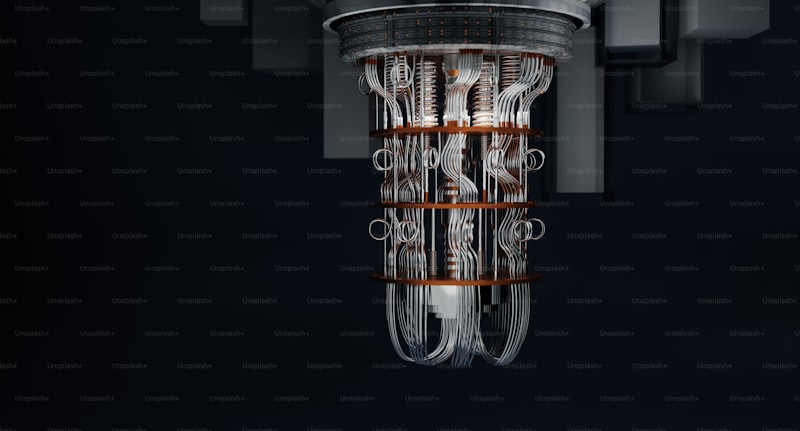Discovering a leak in your car’s differential fluid can be concerning, but understanding the basics of how to repair it can save you time and money. Differential fluid is crucial for lubricating the gears in your vehicle’s differential, ensuring smooth operation and preventing wear and tear.
Firstly, identify the leak by checking for oily patches under your car or a low fluid level in the differential. Differential leaks often manifest as dark, oily spots near the rear of the vehicle. Once confirmed, it’s essential to address the issue promptly to prevent further damage to the differential components.
Repairing a differential fluid leak typically involves several straightforward steps. Begin by cleaning the area around the leak to get a clear view of the source. This can be done using a degreaser and a rag. Once clean, inspect the differential and surrounding components for cracks, loose fittings, or damaged seals.
In many cases, a leaky differential can be fixed by replacing the seals or gaskets. These are inexpensive parts but crucial for preventing fluid loss. Ensure you use the correct type of differential fluid recommended by your vehicle manufacturer when refilling. Using the wrong fluid type can lead to poor performance or even damage to the differential.
If you’re unsure about tackling the repair yourself, consulting a professional mechanic is advisable. They can accurately diagnose the issue and perform the repair with precision. Remember, a well-maintained differential ensures your car runs smoothly and efficiently, enhancing both performance and safety on the road.
Understanding how to address a differential fluid leak empowers you to take proactive steps in maintaining your vehicle’s drivetrain. By staying vigilant and addressing leaks promptly, you can extend the lifespan of your car’s differential and enjoy a smoother driving experience.
Essential Guide: How to Detect and Fix a Car’s Differential Fluid Leak
Have you noticed mysterious puddles under your car after it’s been parked? If you’re wondering what could be causing it, one possible culprit might be a differential fluid leak. Understanding how to detect and address this issue can save you from costly repairs down the road.
Detecting a differential fluid leak early is crucial. One of the telltale signs is finding fluid puddles under your vehicle, typically located near the front or rear axle. The fluid is often thick and can vary in color, commonly ranging from amber to dark brown, depending on the type of differential fluid used in your car.
Another sign to watch for is a noticeable decrease in fluid levels over time. To check this, locate the differential fluid reservoir under the hood and inspect the fluid level. If it’s significantly lower than normal or below the recommended level marker, it’s likely you have a leak.
Pinpointing the exact location of the leak requires a closer inspection. Thoroughly examine the differential housing, axle seals, and gaskets for any signs of wetness or seepage. Sometimes, leaks can occur due to worn-out seals or gaskets, corrosion, or even loose bolts.
Fixing a differential fluid leak often involves replacing faulty seals or gaskets. Start by cleaning the area around the leak to remove any dirt or debris. Next, carefully remove the old seal or gasket, ensuring not to damage the surrounding components. Install the new seal or gasket snugly into place, making sure it’s properly seated and sealed.
After repairing the leak, refill the differential with the manufacturer-recommended fluid to the correct level. Double-check for leaks by running the engine and inspecting the repaired area for any new signs of fluid leakage.
By promptly addressing a differential fluid leak, you can prevent more extensive damage to your car’s drivetrain and ensure smooth and safe operation. Regularly inspecting your vehicle for leaks and performing maintenance can extend its lifespan and save you from unexpected repairs.
Step-by-Step: Repairing Your Car’s Differential Fluid Leak
Identifying a differential fluid leak early is key. Look out for signs such as puddles of fluid under your parked car or a noticeable drop in fluid levels upon inspection. Once you’ve confirmed a leak, it’s important to act promptly to avoid further complications.
Here’s a step-by-step guide to help you tackle this issue effectively:
-
Prepare Your Tools and Safety Gear: Before starting, gather the necessary tools such as a socket set, wrenches, a drain pan, and safety gear including gloves and safety glasses.
-
Locate the Differential: Depending on your vehicle’s make and model, the differential may be located at the rear or front axle. Refer to your owner’s manual for precise location details.
-
Clean the Differential Area: Use a degreaser or a suitable cleaning agent to thoroughly clean the differential and surrounding area. This step ensures that you can accurately pinpoint the source of the leak during inspection.
-
Inspect the Differential: Carefully examine the differential for signs of leakage. Common areas prone to leaks include seals, gaskets, and drain/fill plugs. Look for wet spots or buildup of differential fluid residue.
-
Address the Leak: If the leak is from a damaged seal or gasket, you may need to replace it. For minor leaks, applying a reputable leak sealant product designed for differentials could be a temporary solution.
-
Drain the Old Fluid: Use a socket wrench to remove the drain plug and allow the old fluid to drain into the pan. This step is crucial for removing contaminated or low-level fluid that could compromise differential performance.
-
Refill with New Fluid: After draining, replace the drain plug and carefully refill the differential with the manufacturer-recommended type and amount of differential fluid. This ensures proper lubrication and function.
-
Check for Leaks and Test Drive: Start the engine and check for any signs of new leaks. Once confirmed leak-free, take your vehicle for a short test drive to ensure everything is operating smoothly.
Expert Tips for DIY Differential Fluid Leak Repair
Firstly, pinpointing the leak is crucial. Differential leaks often manifest as spots under your vehicle or low fluid levels. Start by cleaning the differential housing thoroughly and then observe it for fresh leaks after a short drive.
Next, assess the severity of the leak. Minor leaks can sometimes be addressed with a sealant specifically designed for differentials. However, if the leak is more significant, you might need to replace a gasket or a seal. Remember, ignoring leaks can lead to more extensive damage and costly repairs down the road.
Before diving into the repair, gather all necessary tools and materials. You’ll typically need a jack and jack stands to lift your vehicle safely, as well as wrenches and sockets that fit your differential’s bolts. Having a drain pan and shop towels handy will help manage the old fluid.
Once you’re ready to begin, start by draining the old fluid from the differential. Locate the drain plug, usually at the bottom of the differential housing, and carefully remove it. Allow the fluid to drain completely into the pan.
After draining, remove the differential cover to access the internals. Inspect the gasket or seal around the cover for signs of wear or damage. Clean the cover and the differential housing surfaces thoroughly before applying a new gasket or sealant.
When refilling with fresh differential fluid, consult your vehicle’s manual for the correct type and quantity. Overfilling or using the wrong fluid can lead to performance issues or further leaks.

Finally, after completing the repair, monitor the differential for any signs of recurring leaks. A short test drive followed by another inspection can ensure everything is sealed properly.
By following these expert tips, you can confidently tackle a differential fluid leak repair yourself, ensuring your vehicle runs smoothly without any unexpected drips.
Understanding the Signs and Symptoms of Differential Fluid Leaks
Differential fluid leaks can sneak up on you, causing potential damage to your vehicle if not addressed promptly. Imagine your car as a well-tuned orchestra where every part plays a crucial role. The differential, akin to the conductor, ensures smooth performance by distributing power to the wheels effectively. But when this essential fluid starts to leak, it’s like a crack in the baton.
So, how do you know if your differential fluid is leaking? One of the telltale signs is spotting small puddles of fluid beneath your parked car. It could appear clear or slightly colored, often resembling motor oil but with a distinct scent. Don’t mistake it for engine oil; differential fluid has a specific purpose in keeping your wheels turning smoothly.
Another indicator is unusual noises emanating from your vehicle while turning corners. A whining or grinding sound can signal low fluid levels or internal damage within the differential itself. This is your car’s way of saying, “Hey, something’s not right down here!”
Have you noticed a change in how your car handles? A leak in the differential can cause vibrations or a feeling of resistance when you accelerate or decelerate. It’s like driving against a gentle current in a river; something is impeding your vehicle’s fluid motion.
Now, imagine the cost if left unchecked. A small leak today can lead to a hefty repair bill tomorrow. Like a tiny leak in a dam slowly eroding its structure, ignoring differential fluid leaks can undermine your car’s performance and safety over time.
So, what should you do if you suspect a differential fluid leak? Don’t wait for the problem to worsen. Act swiftly. Consult your trusted mechanic to diagnose and fix the issue before it becomes a costly headache. Remember, proactive maintenance keeps your car in harmony, ensuring every part plays its role without missing a beat.
What Causes Differential Fluid Leaks? Explained and Resolved
One of the primary causes of differential fluid leaks is worn-out seals. Over time, the seals that keep the fluid contained within the differential can degrade due to heat and friction. This degradation leads to cracks or gaps through which the fluid can escape. When seals fail, it’s not uncommon to see fluid pooling under the vehicle or noticing a drop in fluid levels upon inspection.
Another common culprit behind differential fluid leaks is loose or damaged bolts. The differential housing is secured with bolts that, if not properly tightened or if damaged, can allow fluid to seep out. This issue is more prevalent in older vehicles or those that have undergone extensive wear and tear.
Moreover, differential housing damage can also lead to leaks. The housing itself can develop cracks or holes over time, especially if exposed to rough terrain or accidents. Even small damages can cause significant fluid loss and potentially damage internal differential components if not addressed promptly.
Resolving differential fluid leaks typically involves identifying the source of the leak through visual inspection and sometimes using a dye to trace the path of the escaping fluid. Once identified, the appropriate repair method can be determined. This may include replacing worn-out seals, tightening or replacing bolts, or even repairing or replacing the differential housing if damage is severe.
Regular maintenance and inspections are key to preventing differential fluid leaks. Checking fluid levels and the condition of seals and bolts during routine service intervals can help catch potential issues early before they lead to more significant problems on the road.
Understanding the causes and solutions for differential fluid leaks empowers vehicle owners to take proactive steps in maintaining their vehicles. By addressing leaks promptly and ensuring proper maintenance, drivers can enjoy smoother rides and longer-lasting differential performance.
Top Methods to Prevent and Repair Differential Fluid Leaks
One of the top methods to prevent differential fluid leaks is regular inspection. Checking the differential housing and seals for any signs of wear or damage can catch potential leaks early on. This proactive approach can save you from more extensive repairs later.
Another effective method is using high-quality differential fluid. Opting for fluids recommended by your vehicle manufacturer ensures proper viscosity and seal compatibility, reducing the risk of leaks caused by inadequate lubrication or seal deterioration.
Additionally, ensuring proper torque on the differential housing bolts during installation or maintenance is essential. Loose bolts can lead to gasket or seal displacement, resulting in leaks over time. Using a torque wrench as per manufacturer specifications can prevent this issue.
When it comes to repairing differential fluid leaks, replacing damaged seals is often necessary. Whether it’s the pinion seal, axle seals, or differential cover gasket, timely replacement can prevent fluid loss and further damage to internal components.
Furthermore, addressing any underlying issues promptly can prevent recurrent leaks. Factors such as worn bearings or excessive differential backlash can contribute to seal failure. Addressing these issues during repairs ensures a more lasting solution.
Regular maintenance and inspection remain key to preventing and managing differential fluid leaks. By staying vigilant and addressing issues promptly, you can ensure your vehicle’s differential system operates smoothly and efficiently, minimizing the risk of leaks that could otherwise lead to costly repairs or safety hazards.
DIY Solutions: Fixing a Car’s Differential Fluid Leak Made Easy
Firstly, what exactly is a differential fluid leak? Your car’s differential is responsible for transferring power from the engine to the wheels. It requires lubrication to function smoothly, and differential fluid ensures everything runs like clockwork. Over time, seals or gaskets can wear out, causing fluid to escape and potentially leading to more significant problems if left unchecked.
To diagnose the leak, start by locating the differential on your vehicle. It’s usually found between the rear wheels and looks like a small, round metal casing with attached hoses or lines. Check for any visible signs of fluid dripping or pooling beneath it. Differential fluid is typically thick and can be clear, amber, or even reddish in color, depending on the type used in your car.
Once you’ve confirmed the leak, gather your tools: a socket wrench set, a drain pan, safety gloves, and of course, replacement differential fluid and new seals or gaskets if needed. Safety first: ensure your car is parked on a level surface and the engine is cool before starting any work.
Next, carefully remove the differential’s fill plug to release pressure. Then, position your drain pan underneath the differential and loosen the drain plug to let the old fluid drain out completely. Take note of any debris or metal shavings in the fluid, as these could indicate more serious issues requiring professional attention.
After draining, clean the area around the drain and fill plugs, then replace any worn seals or gaskets. Once everything is secure, carefully refill the differential with the recommended type and amount of fluid specified in your car’s manual. Double-check for leaks by running the engine briefly and inspecting the differential for any signs of new leakage.

By following these steps with care and attention to detail, you can tackle a differential fluid leak confidently and save yourself a trip to the mechanic. Remember, regular maintenance and prompt attention to leaks can prolong your car’s lifespan and keep you cruising smoothly down the road. Happy fixing!
Frequently Asked Questions
How do I check the differential fluid level?
Learn how to check the differential fluid level in your vehicle with our clear and concise guide. Ensure proper maintenance and performance by following these easy steps.
What are the signs of a differential fluid leak?
Learn about the signs of a differential fluid leak, including fluid puddles under your vehicle, a burning smell from the rear, unusual noises during turns, and visible leaks around the differential housing or axle seals.
Can I drive with a differential fluid leak?
Yes, driving with a differential fluid leak can lead to serious mechanical issues. The differential fluid is crucial for lubricating and cooling the gears inside the differential. A leak can cause inadequate lubrication, leading to excessive wear and potential damage to the differential components. It’s essential to address any leaks promptly to avoid costly repairs and ensure safe operation of your vehicle.
How do I repair a differential fluid leak?
Learn how to repair a differential fluid leak efficiently with our concise guide. Discover step-by-step instructions and essential tips to identify, diagnose, and fix common causes of leaks in your vehicle’s differential system.
What causes a differential fluid leak?
Differential fluid leaks are typically caused by worn seals or gaskets, damaged differential housing, overfilled differential fluid levels, or loose/faulty drain plugs. Regular inspection and maintenance can help prevent leaks.


